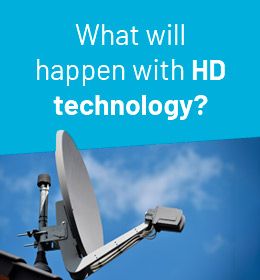Digital terrestrial television (DTT) is a system for transmitting television signals via terrestrial waves. DTT has been a popular technology in many countries for several years, offering a wide variety of channels and programmes to viewers. However, over time, the technology has evolved, and now, DTT is moving towards high definition (HD).
In many countries, DTT has been moving towards HD for the past few years. However, in some countries, the transition has been slower due to high costs and lack of adequate infrastructure. But now, in several countries, including Spain, DTT will move to HD in 2024 by law.
Contents
- 1 The Law for the Promotion of Digital Transformation and the General Law on Telecommunications.
- 2 What is HD technology?
- 3 Differences between HD and DTT
- 4 What do I have to do on my current TV to be able to watch HD TV?
- 5 Reuse Your Old Cell Phone: How to Turn It into a Security Camera
- 6 Satellite dishes: A complete guide
- 7 Amplifiers in large buildings
The Law for the Promotion of Digital Transformation and the General Law on Telecommunications.
Both the Law for the Promotion of Digital Transformation and the General Telecommunications Law establish the regulatory framework for the transition from DTT to HD. The transition to HD will allow viewers to enjoy improved picture and sound quality, which will enhance the TV viewing experience.
The transition to HD will also be beneficial for the television industry. HD content production is becoming more and more common, which means that the transition to HD will enable TV broadcasters to offer a high-quality viewing experience to viewers. In addition, the transition to HD will also allow TV broadcasters to offer new services and functionalities, such as interactive TV and streaming services.
However, the transition to HD also poses challenges for the TV industry. The DTT transmission infrastructure will have to be upgraded to be able to transmit in HD.

What is HD technology?
HD (High Definition) technology refers to a picture resolution standard that offers greater clarity and detail than previous standard definition systems. In general terms, HD refers to any picture resolution higher than standard definition (SD), which has a resolution of 720×480 pixels for 4:3 picture format, and 720×1280 for 16:9 picture format.
HD technology includes different resolution standards, such as HD Ready (720p), Full HD (1080p) and Ultra HD or 4K (2160p), which offer higher resolution and image sharpness. These high-definition technologies are used in televisions, computer monitors, cameras, projectors, and other multimedia display devices.
Differences between HD and DTT
HD (High Definition) technology and DTT (Digital Terrestrial Television) are different concepts, although they are related to the transmission of television signals.
HD technology
refers to the quality of the television picture, which offers high-definition resolution with greater clarity and detail than previous standard definition systems. DTT, on the other hand, refers to the method of transmitting television signals via terrestrial radio waves in digital format, which allows for higher picture and sound quality than the previous analogue system.
DTT technology
It can transmit both standard definition and high definition signals, depending on the channel and receiver used. In other words, DTT is a way of transmitting television signals, while HD technology is a way of improving picture quality.
What do I have to do on my current TV to be able to watch HD TV?
In order to watch HD TV on your current TV, you will need to follow the steps below:
- Check if your TV is HD compatible: Check if your TV has a screen resolution of at least 720p or higher. Most TVs manufactured after 2009 are HD compatible.
- Make sure your TV provider offers HD channels: Check if your cable, satellite or terrestrial TV provider offers HD channels. You can contact your TV provider for more information on available HD packages and options.
- Make sure you have an HD set-top box or receiver: If your TV provider offers HD channels, you should have an HD-compatible set-top box or receiver. If you don’t have one, you can buy or rent one from your TV provider.
- Connect your TV to the HD set-top box or receiver: Connect your TV to the HD set-top box or receiver.






